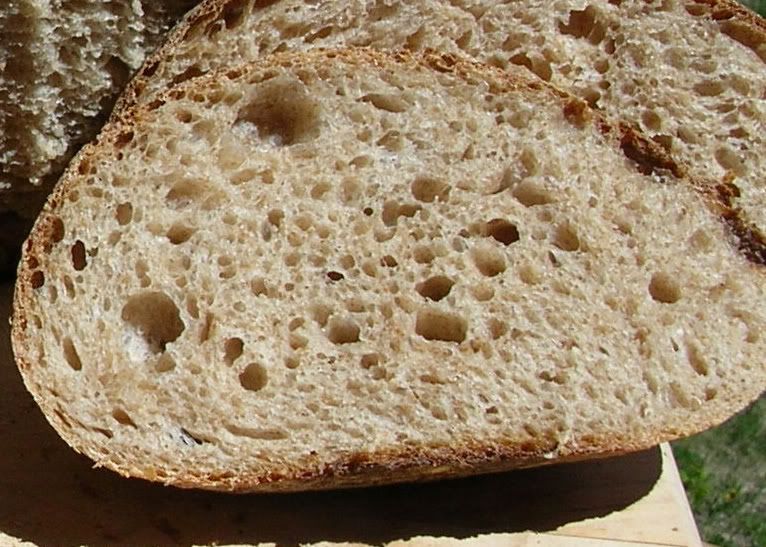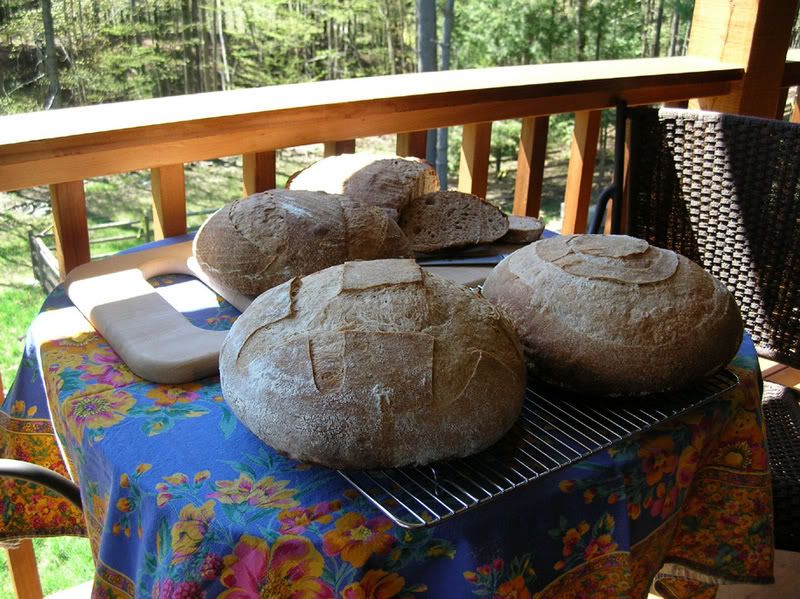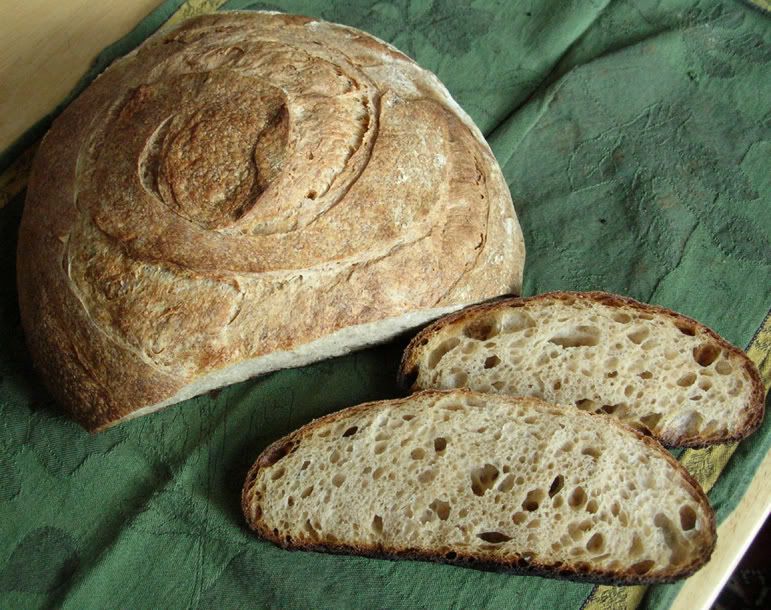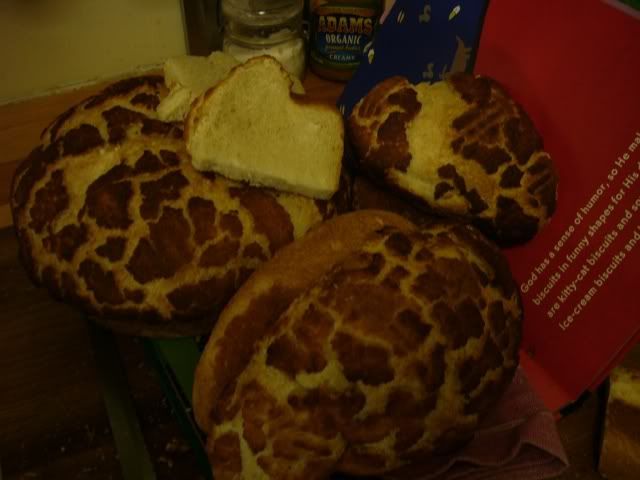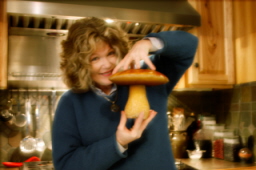A few years ago, while still living in Houston and being totally ignorant of sourdough, I attempted a starter from Tom Jaine's Baking Bread at Home . It was not a good experience. The flavor was intensely sour and the bread more closely resembled a brick than anything else. I'm still not sure whether it was my own ineptness, stale flour, Houston microflora, temperatures, or perhaps some combination of all of those things that led to such disappointing results.
. It was not a good experience. The flavor was intensely sour and the bread more closely resembled a brick than anything else. I'm still not sure whether it was my own ineptness, stale flour, Houston microflora, temperatures, or perhaps some combination of all of those things that led to such disappointing results.
Since then, having moved back to Kansas, I have experienced some modest successes following Sourdolady's procedure for getting a starter up and running. My thinking was that if Jaine's starter was still too sour for my tastes, that maybe I could combine my existing mild starter with a more sour version and come up with something that had the rising power of my present starter but with a more robust flavor. Or not. So far, I'm liking the results with Jaine's starter and haven't attempted a shotgun wedding of the two starters.
Jaine's instructions, with my photos, follow.
The starter:
1/2 cup (60 g) wholewheat or rye flour (I used Wheat Montana Bronze Chief wholewheat flour)
2 tablespoons non-chlorinated water
Mix the flour and water to a paste and knead it with your fingers and thumbs until it is a smooth, firm dough. (I found it necessary to add almost another tablespoon of water to make the dough hold together.)
Put this nut of dough in a glass or small bowl, cover with cheesecloth, not plastic wrap, and leave it in a warm place, at approximately 75-80F, for about 2 days. (Not having cheesecloth on hand, I covered the bowl with a clean dish towel.)

Although the outside will crust over, the inside will be moist and slightly aerated. The smell will be sweet. Discard the crust and proceed with the first refreshment. (Hence, the "hardball" designation in the title of this post.)
The First Refreshment
1/4 cup (60 ml) non-chlorinated water
1 cup (120 g) wholewheat flour
Dissolve the starter in water, add the flour and mix to a dough. Knead with the fingers on a work table.

Put the dough in a smll bowl and cover with plastic wrap. Put it back in your warm spot and leave for a day or two.

It will crust again, but it will also have enlarged and the aeration will be greater. The smell will be very slightly sharp.

(48 hours after first refreshment, above. Note that it has easily doubled in volume. The crack came from me breaking open the ball before remembering that I wanted to take a photo. Interior of ball, below.)

Discard the crust and proceed with the second refreshment.
The Second Refreshment
1/2 cup (120 ml) non-chlorinated water
scant 2 cups (225 g) unbleached white bread flour (I stayed with wholewheat flour for this refreshment.)
Repeat as for the first refreshment, but this time leave it for about 8-12 hours and it should show every sign of life: growing and rising like a normal piece of dough with a slightly sharp edge to the smell, but not rotten or "off".
The leaven is now ready to be added to a dough that will proceed as any other, though often more slowly. (At this point, I put mine in the refrigerator since it would be another day or two before I could bake.)
Results
This time, I really like this starter! The flavor is complex, combining moderate acidity with rounded, almost sweet, wheat notes. Never having had desem bread, I'm not able to draw a comparison, but I wonder if there are similarities in flavor between this approach and the desem approach. The flavor isn't nearly as overpowering as the first attempt was.
To give it a test run, I baked the Pain au Levain with Whole Wheat, page 279, from the King Arthur Whole Grain Baking book. Since I made the starter with 100% wholewheat, about half of the wholewheat flour in the bread came from the starter. I started the dough Friday night, it went into the refrigerator overnight and then I finished it the following morning. The fermentation proceeded slowly but steadily after the dough warmed back up (kitchen temperatures were in the low to mid 70F range). Here's one of the loaves just before it went into the overn:

And here is how it looked after it came out of the oven:

Plenty of oven spring and a deeply colored crust (probably because of the honey in the formula). Sorry, no crumb photo. Maybe I can add one after we cut into the surviving loaf. The crumb was moderately open with some medium-size cells. Pretty good for a bread containing wholewheat.
The only downside, if such it is, is that I now have two starters to keep track of!




 Sponge Image
Sponge Image After 1st mixing all ingredients
After 1st mixing all ingredients After 1st rise before folding
After 1st rise before folding After first fold
After first fold After final fold
After final fold Finished product
Finished product




 Stone Boule
Stone Boule 

